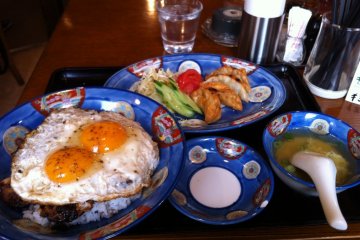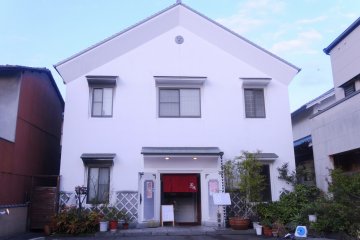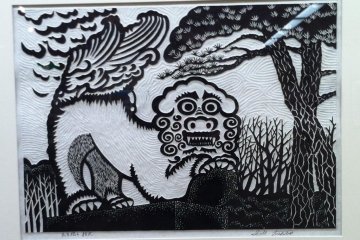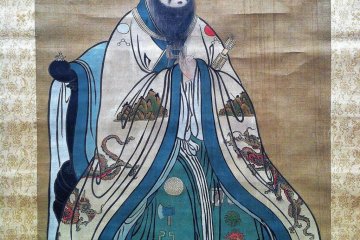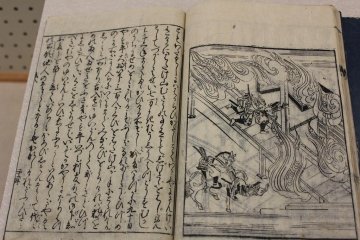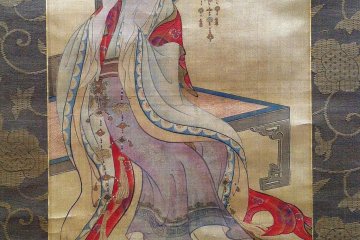The Kono Museum of Art is located in built-up area behind the imposing tower of the Imabari Kokusai Hotel. From outside, the windowless museum resembles a penal facility or maybe a large transformer station, but there’s a pretty little teahouse in its own garden next door, which makes it somewhat more attractive. This is Imabari’s municipal art gallery, but since the land, building and collection were entirely donated by Shinichi Kono, it’s named after him. Kono was a legal publisher, but the Kono clan which governed this part of Shikoku after making their start as pirates, played a very significant role in the history of the region. Their clan insignia can still be seen on countless shrines and temples in Ehime.
The Museum’s collection consists mainly of decorative folding screens and scrolls. The screens feature fantastically dramatic dragons, idealized scenes of nobles enjoying the countryside, and battles with lots of people scampering about on horses. The scrolls are highly varied and include monochrome brush work, calligraphy, and coloured depictions of birds, court nobles, and Chinese-style scenes of deep river gorges. The exhibitions are rotated regularly.
The Museum also hosts special exhibitions. When I last visited, the 53th (sic) Annual Japan Print Society Exhibition was being held, filling two very large rooms. The quality of the prints was very high, and they present a great variety, from almost photographically detailed monochrome works, to colourful, abstract and poster-like images. Japan’s ukiyo-e prints from the Edo period are well known overseas, but their modern successors are equally deserving of fame.
The facilities aren’t the most modern, and a quick glance at the displays of the scrolls made me think, “There’s nothing here!”. But a closer inspection of the very Spartan display cases showed how wrong I was. Each scroll is quite fascinating, from the materials used to the design sensibility of the images and calligraphy. Besides the scrolls, there are books dating back several hundred years, with drawings which show considerable continuity with today’s manga comics.
Entry is 300 yen for regular exhibits, and slightly higher for special exhibitions.
Name in Japanese 今治市河野美術館 — imabarishi kōno bijutsukan — Imabari City Kono Museum of Art




